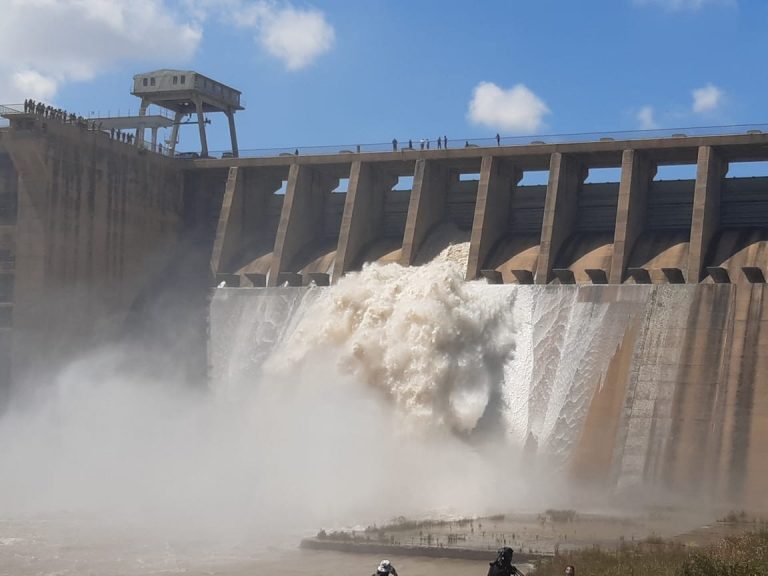
Parts of the country were badly hit by flooding after heavy rainfall brought by Tropical Cyclone Eloise from around 23 January 2021.
Eloise has long since dissipated but heavy rainfall has continued to fall throughout the first weeks of February, causing further flooding and dam levels to rise. As of 11 February, authorities began releasing water from the Vaal Dam, situated about 75km south of Johannesburg.
Mpumalanga Province
The province of Mpumalanga was among the areas of South Africa worst affected by Tropical Storm Eloise.
On 04 February the government of Mpumalanga Province confirmed that 10 people had died "during the heavy rains that followed the tropical storm which reached the Province last week (25 to 31 January 2021). Most of the fatalities were attributable to drowning as a result of the flooded rivers."
The province's Cooperative Governance Department (COGTA) said roads and bridges were washed away in Mbombela, Bushbuckridge and Nkomazi, among other areas.
More heavy rain has fallen in recent days. Komatidraai recorded 130mm of rain in 24 hours to 13 February.
Northern Cape Province
Heavy rain from storm Eloise was seen elsewhere in the country, including in KwaZulu-Natal and Limpopo Provinces but also reaching as far as Northern Cape Province from around 27 January.
Farms were damaged and hundreds of homes and roads were flooded in all districts of Northern Cape, in particular John Taolo Gaetsewe district where 3 people died according to the provincial government.
As of 12 February, many roads were still inundated and local media reported relief supplies were being delivered by helicopter. The Northern Cape government estimates that 600 million ZAR (around 40 million USD) is required for repairs to homes and infrastructure as well as for humanitarian and agricultural relief.
KwaZulu-Natal Province
In KwaZulu-Natal Province, COGTA reported on 11 February that 8 people have died as a result of severe weather that began in the province on 24 January with Tropical Cyclone Eloise.
Dozens of buildings were damaged by floods in eDumbe between 24-27 January, affecting around 400 people.
After a short respite, more heavy rainfall triggered flooding in other parts of KwaZulu-Natal Province from 09 February, when houses were damaged after flooding in Uthukela District from 09 February 2021. Areas of Ladysmith were particularly badly hit after the Klip river broke its banks, prompting evacuations. As much as 87mm of rain fell in Ladysmith in 24 hours to 09 February.
Limpopo Province
In Limpopo province, the provincial government reported on 13 February that at least 10 people have died and 7 are still missing as a result of flooding. Search and rescue operations involving South African Police Service (SAPS) divers are ongoing.
The worst affected areas are in Vhembe, Waterberg, Sekhukhune and Capricorn districts.
Dam Releases
Dams are high in several areas, according to National Department of Water and Sanitation (DWS).
As of 11 February DWS began releasing water from the Vaal Dam, situated about 75km south of Johannesburg on the border between Gauteng and Free State.
As of 12 February the Nandoni Dam located on the Luvuvhu River near Thohoyandou in the district of Vhembe, Limpopo Province, had breached the 100% mark.



Reader Comments
to our Newsletter